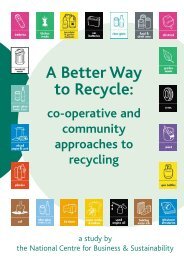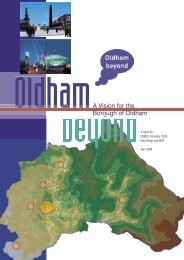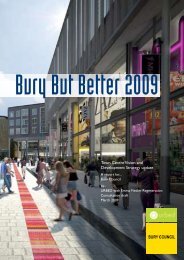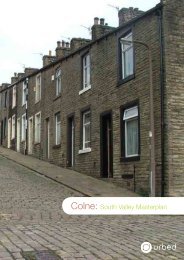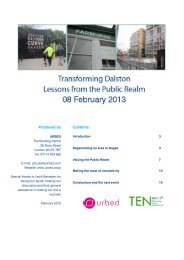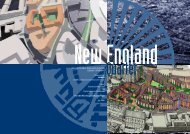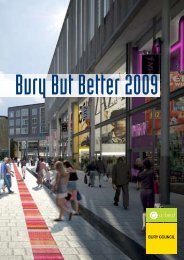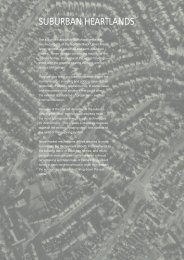Beyond Eco-towns Applying the Lessons from Europe - Urbed
Beyond Eco-towns Applying the Lessons from Europe - Urbed
Beyond Eco-towns Applying the Lessons from Europe - Urbed
You also want an ePaper? Increase the reach of your titles
YUMPU automatically turns print PDFs into web optimized ePapers that Google loves.
1<br />
2<br />
offers great promise. However, all <strong>the</strong> success stories demonstrate that new settlements have to be<br />
located close to growing urban conurbations so that <strong>the</strong>y can share infrastructure and access to jobs<br />
and services in <strong>the</strong> early stages. They should also be places or neighbourhoods, with <strong>the</strong>ir own names,<br />
distinctive identities and community facilities.<br />
• They are located where <strong>the</strong>re is not only housing need (and hence <strong>the</strong> requirement to provide<br />
affordable homes), but also an expanding population ei<strong>the</strong>r because it is an attractive place to live<br />
or due to its proximity to new work opportunities. This helps to achieve much faster build rates than<br />
in <strong>the</strong> UK, and associated economies by spreading <strong>the</strong> overheads.<br />
• The settlements are also relatively compact, with densities that support good quality infrastructure<br />
and hence offer a better quality of life than existing suburbs. Saving energy has long been a priority<br />
for countries with colder winters and lacking <strong>the</strong> UK’s coal and oil resources. Hence homes are<br />
generally better insulated, and triple glazing is common with greater use made of ambient solar<br />
and wind energy, and ground source heat pumps. Electricity can be used for space heating<br />
supplemented by local energy generation in <strong>the</strong> form of Combined Heat and Power (CHP),<br />
through district heating schemes, plus <strong>the</strong> use of renewables so that <strong>the</strong> scheme as a whole has<br />
<strong>the</strong> potential to be zero-carbon.<br />
• They make good use of water to create places where people can live close to nature, and without<br />
risks of flooding (which in <strong>the</strong> Ne<strong>the</strong>rlands in particular has long been a priority and in Germany<br />
has become an increasing concern).<br />
Creative development finance<br />
The hardest task of all is ensuring that <strong>the</strong>re is sufficient funding to join up <strong>the</strong> physical and social<br />
infrastructure, and ensure that it leads ra<strong>the</strong>r than follows housing growth. <strong>Europe</strong>an municipalities play<br />
a leading part in commissioning <strong>the</strong> masterplan so that <strong>the</strong>y achieve consensus, avoid duplication, and<br />
reduce <strong>the</strong> risk to private sector participants. Public financial institutions <strong>the</strong>n supply long-term debt<br />
finance at low rates of interest for installing infrastructure, to be repaid <strong>from</strong> land sales, ra<strong>the</strong>r than relying<br />
on a ‘lottery’ of grants or government patronage. Greater planning certainty reduces development risk.<br />
As a consequence private investors and housebuilders have a lower cost base, and with less risk capital<br />
committed require lower levels of return.<br />
• There is major investment up front in high quality public transport in <strong>the</strong> new communities, such as<br />
light rail and cycle ways. This means that targets for reducing energy or car use are stretching but<br />
realistic. The targets are related to what is already being achieved locally, against national targets.<br />
8



